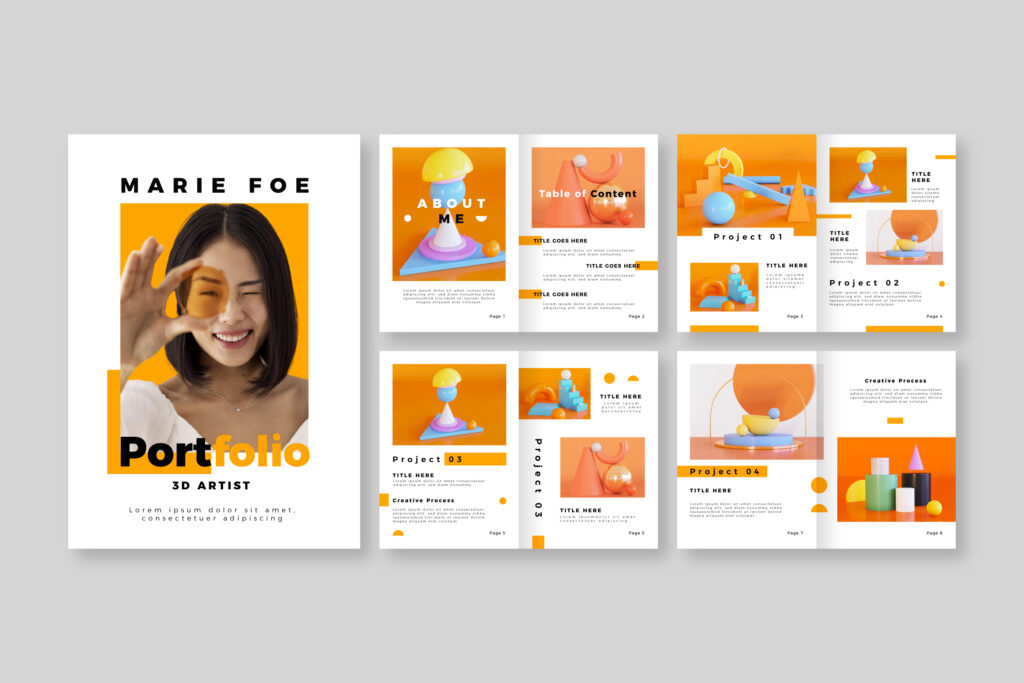Experienced UX designers and product designers are past the rookie UX portfolio mistake of focusing more on their design looks than the story behind the design or neglecting font/visual hierarchy. Your focus is more on showing hiring companies your strategic capabilities and how well you can manage and lead a team with concrete examples.
This can be achieved by sharing case studies that highlight your leadership and strategic abilities. Case studies can be a great way to demonstrate your skills in action and show hiring companies or clients the impact that you have had on your organization or team.
This blog post is for experienced designers who no longer make the common mistakes an inexperienced designer would make, but seek to identify mistakes they may be making while updating their product design or UX design portfolio.
UX Portfolio Mistakes You May Be Making
We all agree that as designers, updating your UX portfolio may seem like a chore and we wish it could automatically update itself. Not sure there is a technology or AI that would allow us do so at the time of these post, but here are UX portfolio mistakes to look out for while updating so you do not have the next company doubting your expertise.
Failing To Quantify The Impact of Your Designs
Don’t just talk about your design process and outcomes. As an experienced designer, you are expected to quantify your design solution’s impact using metrics and data in your UX portfolio. Endeavor to demonstrate how your designs have improved user engagement, conversion rates, or other relevant business metrics. For Example, rather than saying, “Users found the design solution easier to use”, say, “51% of users reported that the new design made navigation 2x easier.”
Trying To Show an Ideal Process
It is a common saying that UX design processes are never linear. For this reason, there is nothing to be ashamed of showing the actual results you got from your research and usability testing. If anything, recruiters expect to see unforeseen challenges that result in an iteration and redesign.
By showcasing how you successfully navigated a challenging situation in your UX portfolio, you can demonstrate your problem-solving skills and adaptability, scoring you points and making you a more attractive candidate for lead positions to potential employers.
Outdated Or Irrelevant Project
Unless it is a place where you keep a collection of your work to track your progress over time, a portfolio you would present to a recruiter for review should show your latest projects. Your most recent projects would be better than the older ones as you practice. Having them in your UX portfolio would demonstrate your proficiency with the latest design tools and trends and your improved skill and experience.
Typos And Grammatical Errors
Typos and grammatical errors is a human thing and may not seem like a big deal but they are. A UX portfolio free of grammatical errors and typos reflects your ability to pay attention to details and your commitment to quality.
Next time you are in a rush to update your UX portfolio and be done with it, remember to proofread for errors and inconsistencies to avoid recruiters doubting your competence. You could seek the feedback of an impartial observer to eliminate bias and improve the quality of your work.
Optimize For Different Devices
Believe it or not, while you are in a hurry to update your portfolio to move on to more important tasks, you could forget to ensure that your designs are responsive. Do not forget that the mobile-first design approach is as important while updating your UX portfolio because you never know on which device the hiring manager will be viewing your UX portfolio. It will be a plus if your designs can adapt to different screen orientations and load quickly.
Not highlighting leadership and mentoring skills
Experienced UX designers and product designers often have experience leading or mentoring other junior designers in their teams. It is important to share insights on how you have guided other designers, fostered collaboration with designers and developers alike, and contributed to the growth of your team. This will show hiring companies that you have leadership and collaborative skills that qualify you for senior positions.
FAQ on Updating UX Portfolio
Is Updating My UX Portfolio Necessary?
A UX portfolio is not just a compilation of your best work but also a showcase of your skills and experience to attract new opportunities and reflect on your growth and development.
How often should I update My portfolio?
Some designers choose to do so yearly but it is advisable to do this every 6 months or as soon as you have completed a standout project.
When can I update my portfolio?
This can be done over any weekend you are free. Before then, get a few important things ready. You can read how you can update your UX portfolio to guide you.
It’s A Wrap
It is human to make mistakes, however, try to make your UX portfolio free of mistakes as much as you can even if you need to ask someone to help review it. Being mindful of these UX portfolio mistakes can help experienced UX designers present themselves effectively and demonstrate their wealth of experience and expertise.


